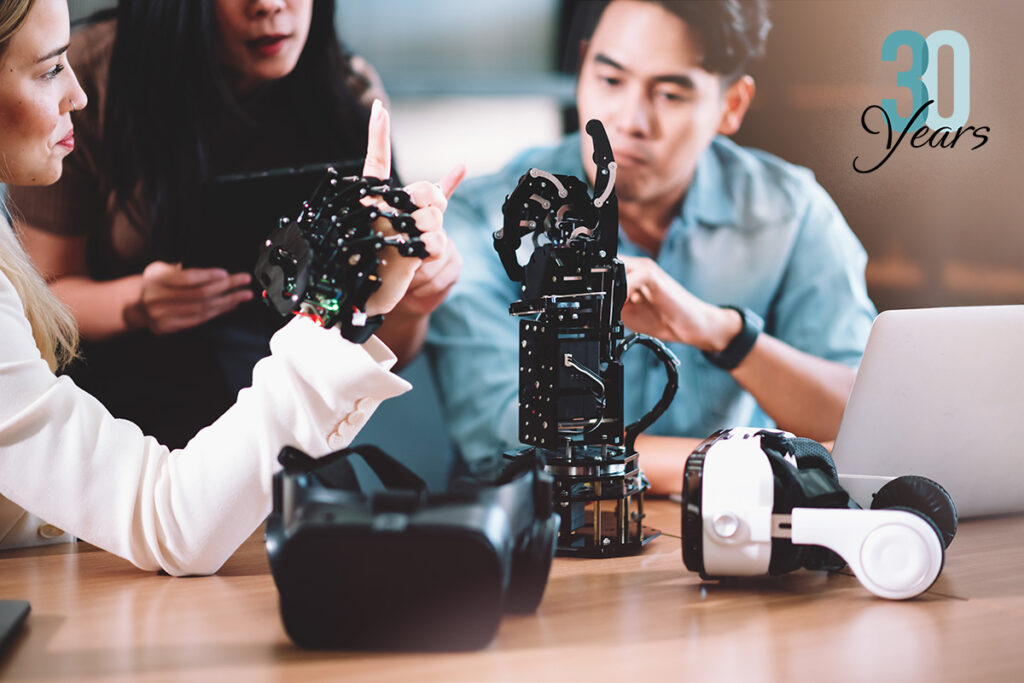The outdoor recreation industry has emerged as a transformative economic opportunity in a post-pandemic world where people place an increasingly high value on experiences, work-life balance, and opportunities for connection to nature and to one another. While traditionally associated with tourism and quality of life, outdoor recreation is being redefined by communities that are leveraging it as a driver of innovation, entrepreneurship, and regional competitiveness. In 2023, outdoor recreation generated $1.2 trillion for the US economy and accounted for an estimated 5 million jobs. Every outdoor activity—from skiing and biking to backpacking and climbing—relies on equipment, apparel, technology, and support services.
Each activity presents a market opportunity for entrepreneurs. Advances in materials science, design, and mobility are expanding how people interact with the outdoors, creating new ways to convert competitive advantages in the natural environment into innovation-driven growth. This work often involves more than startups and gear. It requires talent development, physical space for business incubators and accelerators, infrastructure for testing and production, and a coordinated strategy to connect local assets with emerging markets. Two recent TIP clients—Gunnison, Colorado, and ORIAN—demonstrate how aligning outdoor recreation with entrepreneurship and talent can catalyze sustainable, place-based growth.
Gunnison, Colorado
In Gunnison, Colorado, TIP worked with local leaders to develop a strategic plan, The Gunnison Advantage, that aligns outdoor recreation with emerging technology and innovation. The city benefits from an enviable combination of natural assets, higher education resources, and a supportive entrepreneurial ecosystem.
A cornerstone of Gunnison’s entrepreneurial ecosystem is ICELab (innovation, creativity, and entrepreneurship lab), located on the campus of Western Colorado University. ICELab offers coworking space; support to local businesses that export products or services outside of the county; and structured programs that connect founders with mentors, investors, and state-level resources. Its university location allows ICELab to tap directly into a pipeline of students and faculty, offering experiential learning opportunities and real-world startup engagement for emerging talent. Western Colorado University reinforces this ecosystem by offering an outdoor industry MBA with concentrations in product development and customer experience design, equipping emerging talent with the specialized skills needed to succeed in recreation-focused ventures.[1] Together, ICELab and the university form a powerful hub for cultivating outdoor industry startups grounded in local assets and innovation.
The impact on the local economy is tangible. IceLab’s incubator has helped several founders create successful startups, some of which have been part of a local business showcase at the Gunnison-Crested Butte Airport sponsored by ICELAb. The showcase has allowed companies such as Gnara, an innovative outdoor clothing manufacturer, and PACT Outdoors, makers of sustainable outdoor hygiene products, to reach a broader audience of potential customers and founders. In addition, the Moosejaw Outdoor Accelerator, previously co-located at ICELab, provided marketing, e-commerce, and financial assistance to participating entrepreneurs.
Growing startups locally is important, but creating connections with the outside world of funding is key to scaling up in an incubator environment. In 2023, ICELab hosted an invite-only outdoor innovation funding summit that connected investors and entrepreneurs through networking, outdoor activities, and company pitches. This event has echoes of the annual Outside Festival and Summit, a multiday event hosted in Denver, Colorado, that combines entertainment with startup pitch competitions, connections between founders and funders, and dynamic speakers.
The city’s strategy focuses not only on building businesses but also on aligning local talent, educational institutions, and natural assets to support innovation in outdoor recreation. The result is a model that strengthens the local economy while staying true to the region’s unique advantages.
Outdoor Recreation Innovation Action Network (ORIAN)
Following the closure of a major coal fired powerplant, Michigan’s Central Upper Peninsula (UP) faced an urgent need for economic diversification. With rugged terrain, a cold-weather climate, and a strong tradition of outdoor adventure, regional leaders saw an opportunity to grow an outdoor recreation industry cluster. In 2024, the Central Upper Peninsula Planning and Development Regional Commission (CUPPAD) and Innovate Marquette, the Central UP’s SmartZone and entrepreneurial organization, secured funding from the US Economic Development Administration to develop a comprehensive strategy for the region’s outdoor recreation economy.
TIP was selected to co-create the plan, UP for Adventure, alongside a new public-private collaborative, the Outdoor Recreation Innovation Action Network (ORIAN). A first step was defining “outdoor recreation” beyond its traditional ties to tourism, hospitality, and retail. The project focused on three interconnected pillars: industry (makers), economy (facilitators), and assets and infrastructure (physical environment).
The first pillar—industry—draws on the region’s history as a testing ground for bikes, climbing gear, and trail equipment and centers on the strategic question: How can the UP’s natural advantages be used to attract companies that design and test products locally? A large part of the answer lies in the region’s universities. Michigan Technological University and Northern Michigan University offer degree programs in mechanical engineering, materials science and engineering, outdoor recreation leadership, and ski area business management—skills that directly support product innovation and the broader recreation economy. [2] These institutions help build a locally rooted workforce more likely to remain in the region post-graduation. TIP’s findings also underscored the need for workforce systems that reflect the full spectrum of recreation careers, from outfitters and retailers to marketers and event managers.
Universities are just one piece of creating an environment for product development and testing. Innovate Marquette, the business incubator and accelerator serving the Central UP, has a strong cluster of outdoor recreation companies it has supported, and Invest UP, the region’s economic development organization, identifies cold weather and rugged terrain testing as one of their core industries. UP for Adventure builds on these assets, laying out a roadmap to accelerate industry growth by fostering innovation and collaboration across institutions.
The second pillar—the recreation economy—focuses on guides, retailers, outfitters, and events that create demand and culture around outdoor experiences. The Central UP hosts marquee events like the Michigan Ice Fest, which draws elite climbers and product developers from around the world for gear testing and workshops. Similarly, the Fresh Coast Film Festival celebrates the outdoor lifestyle through film, while also offering attendees guided recreation experiences that showcase lesser-known activities like cold-water surfing and ski jumping. These events function as both tourism draws and industry convenings that promote innovation and product development.
The third pillar—assets and infrastructure—is essential to sustaining the ecosystem. This includes both natural features (waterways, forests, cliffs) and human-made facilities (trails, parks, testing centers). During the planning process, TIP and ORIAN found that outdoor companies were often located in places with exceptional access to recreation assets. These settings support product innovation, attract top talent, and foster a culture of experimentation.
Together, the three pillars form a comprehensive strategy for growing an outdoor recreation economy that is both place-based and innovation-driven.
Lessons from the Field
Though two distinct models, Gunnison and ORIAN offer several useful lessons for innovating within outdoor recreation.
- Know your assets. Start by identifying your community’s unique outdoor amenities, business ecosystem, talent pool, and infrastructure. Then evaluate where those assets are strongest (and perhaps underutilized), where investment is needed, and where the greatest potential lies for growth.
- Treat outdoor recreation as a platform for industry. When positioned as a source of innovation, manufacturing, and technology (not just tourism), outdoor recreation opens new pathways for growth.
- Leverage higher education as a driver of innovation. Universities and colleges are essential partners in building the talent pipeline, supporting startups, and offering space and tools for product development.
- Connect people to place. Entrepreneurs in outdoor recreation often choose where to build based on the quality of life and environment. Communities that invest in their assets, maintain trails and parks, and celebrate their unique geography are better positioned to attract and retain innovators.
- Tell the story. Visibility matters. From airport showcases to film festivals and funding summits, communities that elevate their entrepreneurs help build momentum and attract outside support.
- Align and act. Whether through an incubator, a regional plan, or a business challenge, having a shared strategy and aligned leadership is critical to moving from vision to action.
The examples of Gunnison and ORIAN show that outdoor recreation is a powerful foundation for regional transformation. By aligning natural assets with talent, entrepreneurship, and innovation infrastructure, communities can unlock new economic opportunities that are both resilient and place-based. In a rapidly changing world, those that recognize outdoor recreation as a foundation for business development, not just tourism, are better positioned to compete—while preserving the very landscapes and communities that make such growth possible.
[1] Other examples of similar programs include Utah State University’s undergraduate degree focused on product design and development. See usu.edu/degrees-majors/outdoor-product-design-and-development_bs for more.
[2] There are other examples of similar programs across the US. Northern Vermont University offers an undergraduate degree in outdoor education, leadership, and tourism, and Central Oregon Community College’s outdoor leadership program focuses on expedition planning, risk management, and outdoor living skills. See vermontstate.edu/academic-programs/outdoor-education-leadership-bs/ and cocc.edu/programs/outdoor-leadership/ for more.
Image credit: Kyle Bolen Photography



